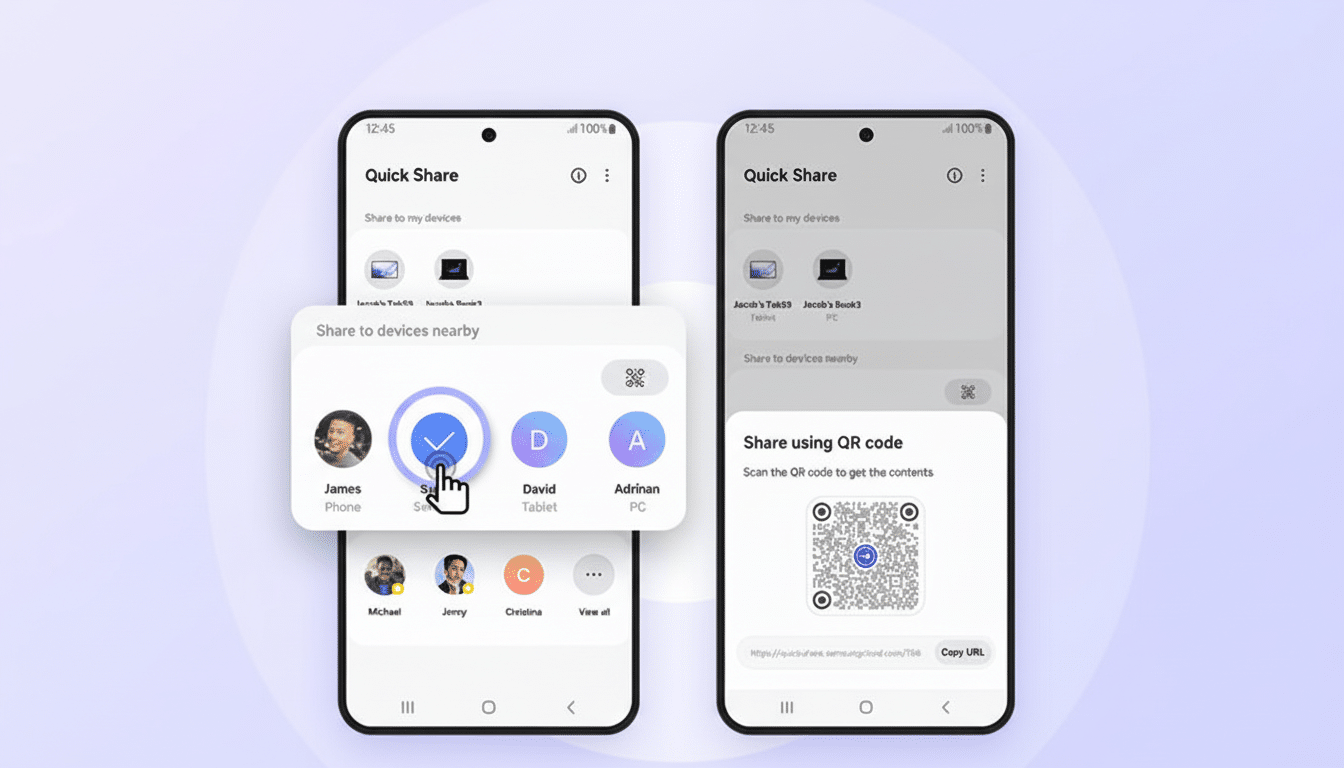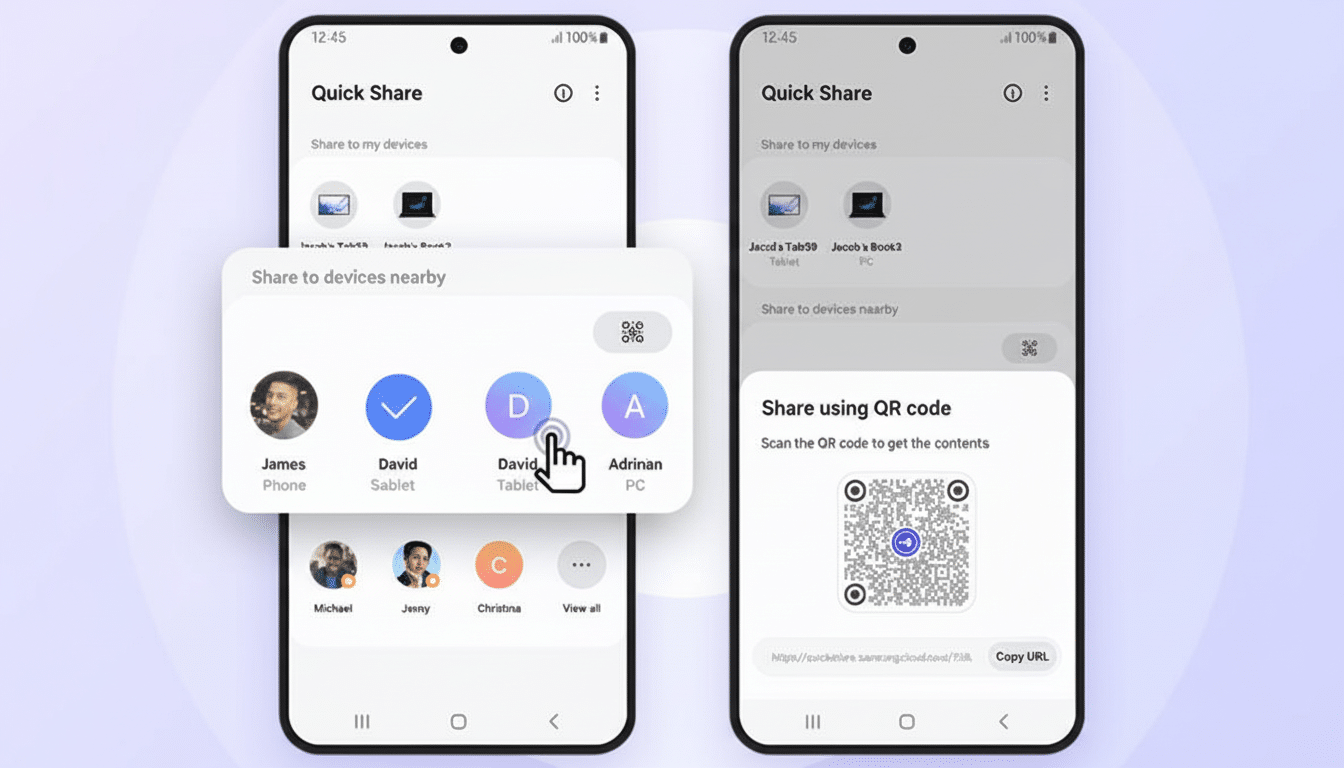In a surprise, Google has added the ability to share files via AirDrop on its Android operating system. No added apps, no cables — just tap to send between devices. The rollout will be limited to the Pixel 10 series initially, but support for more Android phones is coming when Google completes work on the underlying system parts.
What changed and how Android Quick Share now works with AirDrop
Quick Share previously took care of fast, device-to-device transfers over Android using a combination of Bluetooth for discovery and Wi‑Fi to transfer the actual payload. The most obvious headlining change is that it now communicates in the same “language” AirDrop does, which means an Android phone can show up and act like a trusted peer to nearby iPhones, iPads, and Macs. You can shuttle photos, videos, links, contacts, and other common file types back and forth without resorting to cloud storage.
- What changed and how Android Quick Share now works with AirDrop
- Compatibility and rollout across Pixel 10 and other Android phones
- Security considerations and the technology under the hood explained
- Why this move matters for Android and iPhone users alike
- The policy and market backdrop shaping this change
- What to watch next as Quick Share and AirDrop adoption grows

It runs like this: Pick Share and then Quick Share on Android, select an Apple device that’s local to you, and the person will receive the standard AirDrop prompt. Transfers are also local, so you don’t need an internet connection. Range and speeds will vary depending on the Wi‑Fi radios in question, as well as local interference, but modern gear can push very large files in seconds under ideal conditions.
For families and teams of mixed platforms, this single-handedly takes away one of the last daily frictions—no more emailing a 200-megabyte (MB) video to yourself or spinning up a third-party app just so that you can hand off a file across phones.
Compatibility and rollout across Pixel 10 and other Android phones
Google is turning the feature on starting with the Pixel 10 line, and there is a technical reason: The update depends upon Android Wi‑Fi stack changes that are delivered via Google’s Mainline system modules and updated Wi‑Fi firmware. That combination can’t be simply sideloaded; it has to ship as a system-level extension. Hope for a staged rollout to recent Android flagships as OEMs check and verify the essential firmware and Mainline patches.
On the Apple side, AirDrop settings and permissions operate as normal. The receiving user remains in control of visibility (Contacts Only/Everyone) and is required to accept incoming transfers. Bigger sends to Macs might need your device to be awake and on the same local network that AirDrop usually prefers.
Security considerations and the technology under the hood explained
Google says it built the implementation itself, vetted the technology with its privacy and security team, and hired an independent firm to perform penetration testing. Though the firm hasn’t shared deep technical docs, industry engineers suggest Apple’s AWDL (Apple Wireless Direct Link) is the discovery and transport layer used by AirDrop. There are two potentially viable paths:
- Use newer iOS-distributed Wi‑Fi Aware features that go beyond the Apple MP API.
- Implement a clean-room compatibility shim as part of an Android Wi‑Fi stack implementation, and provide support to interoperate with AWDL.
The latter would be audacious but not infeasible—AWDL is built on existing Wi‑Fi and Bluetooth primitives. Either way, the transfers are local, not over some distant network, with radio-level handshakes to establish a private link and explicit user prompts (to minimize phishing) if unwanted sharing is occurring. The lack of a cloud intermediary is a security and privacy victory when it comes to sensitive content being sent inside offices, classrooms, or homes.

Why this move matters for Android and iPhone users alike
AirDrop has been a widely regarded part of Apple’s “it just works” moat. File sharing was a strong switching barrier: even if an Android-powered phone packed something like a better camera or battery, the relative inability to pass media around (at least frictionlessly) to iPhone-toting friends kept people in place. Piper Sandler’s long-term teen survey consistently shows iPhone ownership at ~85% among US teens—social features (e.g., iMessage and AirDrop) play a concrete role in that loyalty.
By connecting Quick Share with AirDrop, Google eliminates that daily convenience gap without requiring users to disrupt their behavior. That’s meaningful in markets where work and home occur on platform-mixed terrain. In IT it might mean less demand for ad hoc, unauthorized workarounds that involve routing files through personal cloud services.
The policy and market backdrop shaping this change
There’s also an undertow of regulation beneath this. The DMA puts pressure on gatekeepers to ensure greater interoperability. Apple has already adapted on messaging and distributing apps to comply with regulatory scrutiny. With Google having established technical interoperability, trying to ban it could prompt uncomfortable questions from competition regulators.
Market dynamics matter too. IDC figures have Android at ~70% worldwide smartphone share, iOS about ~30%. Clearly there are cross-platform benefits on both sides: Android users have an easier time sharing into iOS-heavy circles, and iPhone users receive more painlessly from the grander smartphone universe.
What to watch next as Quick Share and AirDrop adoption grows
Three signals will tell the story from here:
- Expansion beyond Pixel 10 — keep an eye on OEMs announcing Mainline and firmware readiness.
- Stability and performance with different device combinations; enterprise pilots will rapidly uncover edge cases.
- Apple’s stance — silent acquiescence would entrench a new norm; a technical fix, however, could spark a customer revolt and heighten regulatory scrutiny.
For now, the ruling is clear: Android and iOS can finally share files as neighbors, not competitors. The wall isn’t down, but Google has just opened a very big door.

